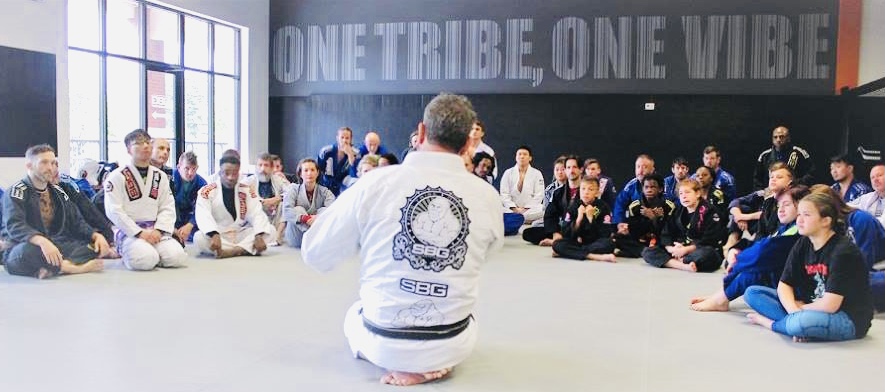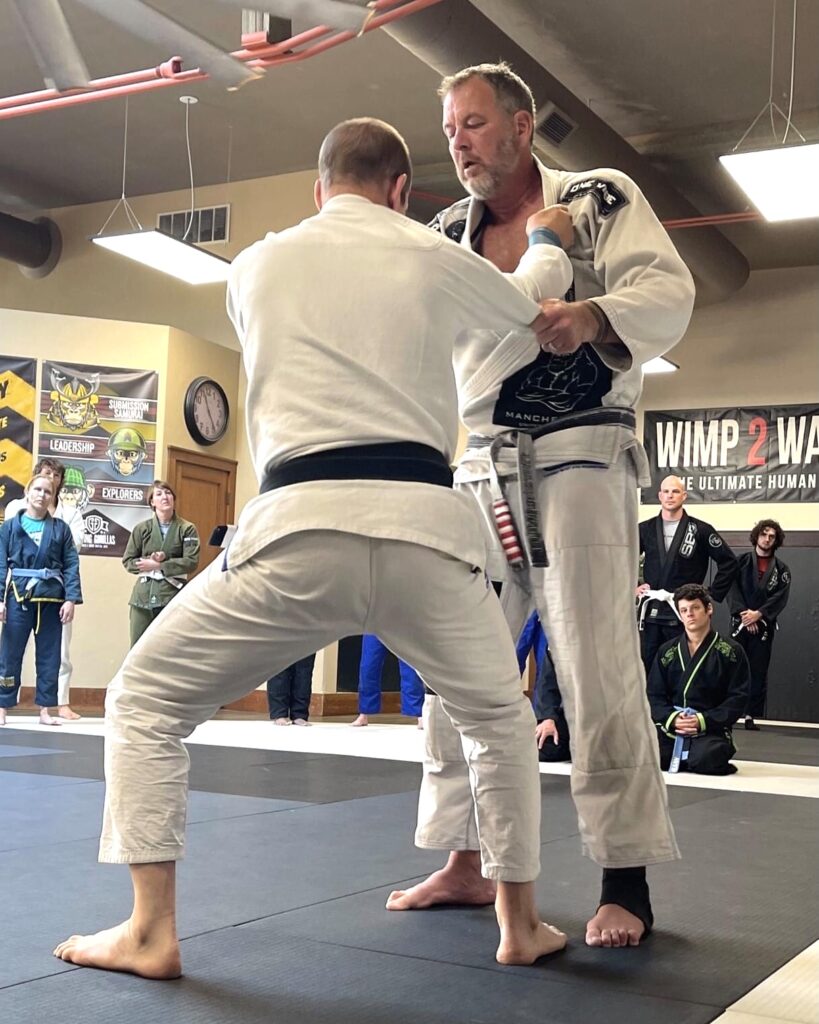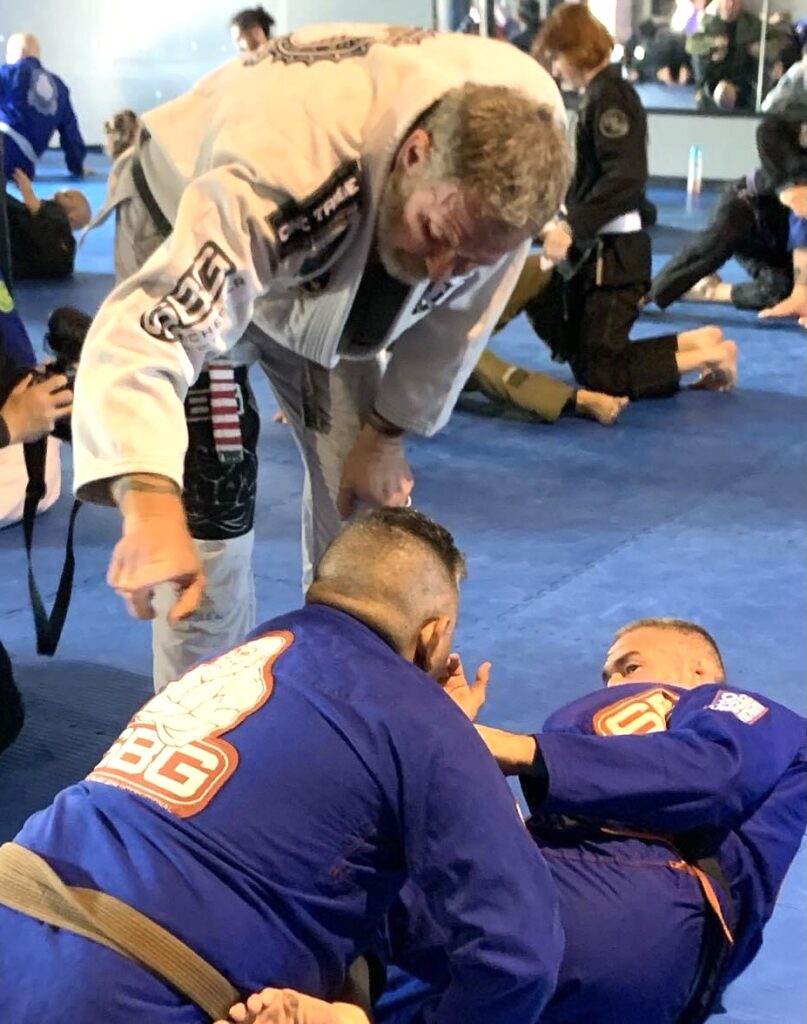 FOR RELEASE April 2023 Contact: Kurt Volkan
FOR RELEASE April 2023 Contact: Kurt Volkan
310-666-6853 kurt@pitchstonebooks.com
The Gift of Violence
Practical Knowledge for Surviving and Thriving in a Dangerous World
by Matt Thornton
With a foreword by Robb Wolf and an afterword by Peter Boghossian
“For many years, Matt Thornton has been one of the most passionate ambassadors of the martial art of Jiu-Jitsu. His new book, The Gift of Violence, examines violence in the twenty-first century. Matt encourages his readers to apply the lessons he has learned in Jiu-Jitsu to every aspect of their lives. Above all, The Gift of Violence makes it clear that Jiu-Jitsu is not just a sport; it is also a philosophy that makes one strong enough to forgive
And, when necessary, confident enough to fight.”
—Rickson Gracie, Brazilian Jiu-Jitsu and Mixed Martial Arts legend

The Gift of Violence isn’t a title meant to provoke. Rather, it is a title meant to communicate a core but oft-ignored truth: an individual or group determined to commit an act of violence can only be stopped with a show of force—or, to put it another way—with the threat or use of violence. The cliché that violence never accomplishes anything is a lie. At times, it is the only tool we humans have to prevent or stop violence. This is true whether
we are being attacked by a predatory animal on the savanna, whether we are facing a hostile enemy on the battlefield, or whether we are facing an armed invader in our home. In such circumstances, the willingness and ability to commit reciprocal violence are integral to our very survival. If it wasn’t, none of us would be alive today.
Purchase your copy of The Gift of Violence today.
Indiebound: https://www.indiebound.org/book/9781634312301
“There’s a reason the first line in my book is “Violence is natural,’” reveals Matt Thornton, the book’s author. “This isn’t meant as a moral judgment. It’s just a fact. From an evolutionary standpoint, it’s been as vital to our species as our drive to eat or have sex. Without it, humans wouldn’t be humans.”
Although violence comes in many forms, for the purposes of his book, Thornton is speaking specifically about physical acts of force
committed by individuals against individuals so as to subdue, injure, or kill.
“My book is not about military strategy or wilderness survival. My interests here are far more personal and immediate. I’m writing for the law-abiding citizen of all ages and abilities, man and woman, young and old, athlete and non-athlete.” As the founder of Straight Blast Gym (SBG), one of the most recognizable and celebrated Mixed Martial Arts gyms in the world, and as
someone who has devoted the last thirty years of his life to studying and teaching self-defense, Thornton is uniquely positioned to, as he puts it, “help good people become more dangerous to bad people.”
Even so, the book is not a fighting instructional or about specific fighting techniques. Rather, Thornton focuses on harnessing the single greatest weapon we have as a species—the human mind—and wielding it for purposes of self-defense. “You don’t need to be a skilled athlete or trained fighter to survive in the face of violent threats. Don’t get me wrong, those things can help, but what you really need is a functioning brain. If you have
the capacity to absorb a bit of knowledge and act on that knowledge, then you’ll be able to practice the easiest and best form of self-defense available—the kind that helps you avoid violent predators altogether.” To that end, the information and lessons shared by Thornton will not only help readers reduce their chances of becoming a victim of violence but also
increase their chances of surviving a violent encounter.
“To survive is to win,” says Thornton, quoting the words of legendary fighter Rickson Gracie. Indeed, survival is the core focus of Thornton’s book, the bulk of which is about how to identify violent threats and how to avoid and outsmart predators. His professional training and knowledge aside, he draws extensively from the scholarly literature in communicating best practices and offering practical advice. “When it comes to things like
identifying the traits and characteristics of predators, and the motives and methods of predators, these things are all well studied across multiple disciplines—from psychology to economics to anthropology to criminology—but those findings are often found only in academic journals and in a language that isn’t always easy to penetrate.” By aggregating
and synthesizing these studies, Thornton offers clear and easy-to-follow lessons to the reader based on the best available research. “The end notes make up roughly one-fifth of the book,” remarks Thornton. “The notes section is a whole other book in itself for those who want to read them, explore the actual research, and get into a whole other level of detail.”
When asked for an example of this research, Thornton cites a university study that demonstrated criminals key in on certain types of gaits when selecting possible targets.
“What that study showed,” says Thornton, “is that something as simple as how you walk on the street can determine whether you’re on or off a predator’s shopping list. And I spend a lot of time breaking down those and many other such details in the book.”
Beyond the scholarly literature, Thornton also takes a deep dive into crime
statistics, particularly as they relate to violent crime, including assault, rape, and homicide.
“The violent crimes that make the headlines are usually the ones the average person should worry least about. We often worry about the hooded stranger in the parking garage, for example. Those strangers can certainly be threats, but the problem is those worries often overshadow far closer threats: the ones already in or near your home.” As Thornton makes
plain, while young males from fatherless homes with a history of arrests commit the highest rates of violence, the greatest risk of violence in the reader’s day-to-day life will come from the people they already know. While this is true no matter one’s age or gender, this is especially true for women and kids. “It’s the boyfriends and ex-husbands and stepdads and other males in or around the house we need to pay most attention to,” says
Thornton. “This doesn’t mean we need to be paranoid, but it does mean you need to pay attention, trust your instincts, and create and enforce boundaries.” While most of Thornton’s advice is generalizable, as a father of six, he shares specific advice to parents of children given their unique vulnerability. “We can’t always be there to keep them safe, so they too need to learn how to stay safe and how to seek help if ever in danger.”
Although taking a rational approach to the scientific data, being mindful of our environment, and adopting basic safety practices will make us far safer today than yesterday, none of this is ever a guarantee we won’t ever be targeted. After all, in a country like the United States, more than 80 percent of us will experience a violent crime in our lifetimes. Chances are higher still depending on any number of other factors, including our location, occupation, income level, etc. Here, too, Thornton offers practical and potentially lifesaving advice, both for surviving or escaping violence and for preparing yourself for violent encounters. While his primary guidance involves mental preparation, such as techniques for avoiding the so-called freeze response, he also touches on the best ways to physically prepare for violence. In this regard, his advice is as much about what not to do as what to do. Specifically, he takes to task what he calls the “fantasy-based martial arts,” the ones that focus only on forms or katas, that are “too deadly to practice,” and that offer false promises. “From a self-defense standpoint, those martial arts aren’t better than nothing. To the contrary, they are worse than nothing,” says Thornton. “They instill a false sense of
confidence that will get you killed.”
As Thornton makes abundantly clear, the only possible way to begin to physically prepare for a violent encounter is by training and sparring against resisting opponents.
“Just about any combat sport will do,” he says, “whether wrestling, boxing, Judo, Muay Thai, or Brazilian Jiu-Jitsu. The key is the training process must be what I call ‘Alive.’ The training can’t be rote; it must involve unpredictability, it must be dynamic, and it must involve resistance.” Obviously, training in the gym is just a simulation of what you might experience in your home or on the street and isn’t for everybody, but according to Thornton, the physical and mental demands of this particular type of training produces not only better fighters but also better people. “When you know what you’re capable of from hour upon hour in the gym, you have far less to prove to yourself or others—you’re far less likely to engage in chest-beating displays or to fight out of a misplaced sense of pride.”
“That’s ultimately the true ‘gift’ of violence,” says Thornton. By understanding the nature and role of violence, knowing how predators select prey and deploy violence, and becoming skilled in the language, if not practice, of violence, you make yourself not only less likely to experience violence but also less likely to engage in violence. That is the formula for keeping yourself and your loved ones safe.
His last piece of advice—found in the book’s final sentence—sums it up thusly: “Be the gentlest and most dangerous person possible.”

About the Author(s)
Matt Thornton has been teaching functional martial arts for more than thirty years and holds a 5th degree black belt in Brazilian Jiu-Jitsu. His organization, Straight Blast Gym (SBG), has more than seventy locations worldwide and has produced champion MMA fighters as well as world-class self-defense and law enforcement instructors. He lives with his wife Salome and their five children in Portland, Oregon.
Robb Wolf is a biochemist and author of The Paleo Solution and Wired to Eat.
Peter Boghossian is a philosopher and coauthor of How to Have Impossible Conversations.
The Gift of Violence
www.pitchstonebooks.com
April 2023 / ISBN 9781634312301/ 400 pages / hardcover
